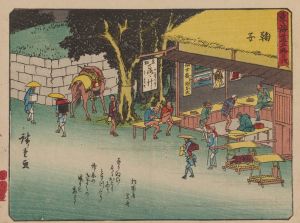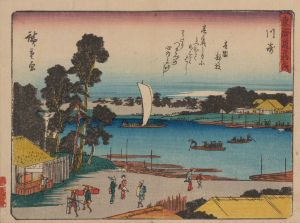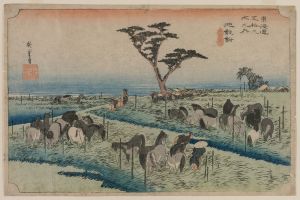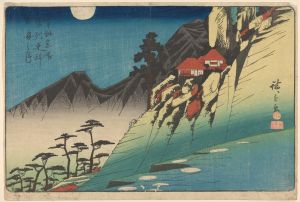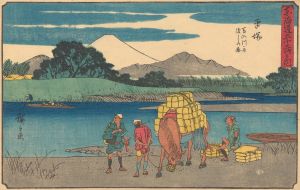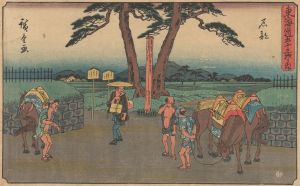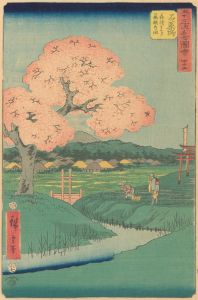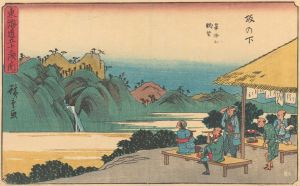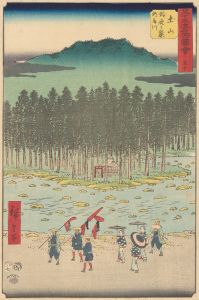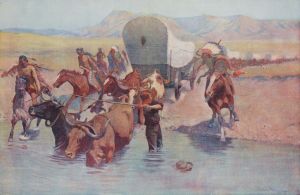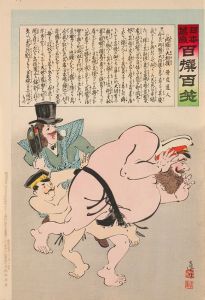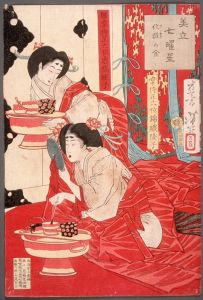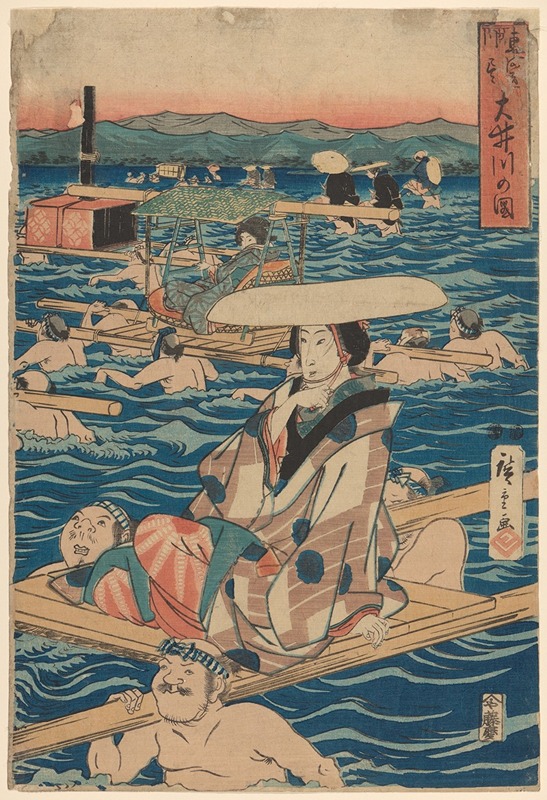
Fording a Broad River
A hand-painted replica of Andō Hiroshige’s masterpiece Fording a Broad River, meticulously crafted by professional artists to capture the true essence of the original. Each piece is created with museum-quality canvas and rare mineral pigments, carefully painted by experienced artists with delicate brushstrokes and rich, layered colors to perfectly recreate the texture of the original artwork. Unlike machine-printed reproductions, this hand-painted version brings the painting to life, infused with the artist’s emotions and skill in every stroke. Whether for personal collection or home decoration, it instantly elevates the artistic atmosphere of any space.
Andō Hiroshige (1797–1858) was a prominent Japanese ukiyo-e artist of the Edo period, celebrated for his landscape prints and depictions of everyday life in Japan. One of his works, Fording a Broad River, is a woodblock print that exemplifies Hiroshige's mastery of the genre and his ability to capture the natural beauty and human activity of his time.
Fording a Broad River is part of Hiroshige's renowned series The Fifty-three Stations of the Tōkaidō (Tōkaidō Gojūsan-tsugi), which was first published in the early 1830s. This series depicts scenes along the Tōkaidō, the main coastal route connecting Edo (modern-day Tokyo) to Kyoto. The route was heavily traveled during the Edo period, and Hiroshige's prints provide a vivid portrayal of the landscapes, towns, and people encountered along the way.
The specific print, Fording a Broad River, corresponds to one of the stations along the Tōkaidō. It illustrates travelers crossing a wide river, likely with the assistance of porters or ferrymen. The scene captures the challenges of travel during the Edo period, as well as the interdependence between travelers and local workers. Hiroshige's use of perspective, color, and composition conveys the vastness of the river and the effort required to traverse it. The print also reflects the artist's keen observation of human activity and his ability to integrate it harmoniously into the natural environment.
Hiroshige's work is characterized by its attention to detail, use of vibrant yet subtle colors, and innovative compositions. In Fording a Broad River, these qualities are evident in the flowing water, the figures in motion, and the surrounding landscape. The print exemplifies the ukiyo-e tradition of capturing "pictures of the floating world," focusing on transient moments and the beauty of everyday life.
As with many of Hiroshige's works, Fording a Broad River not only serves as an artistic masterpiece but also as a historical document, offering insight into the culture, geography, and travel practices of Edo-period Japan. The series as a whole remains one of the most celebrated achievements in Japanese art, and individual prints like Fording a Broad River continue to be admired for their aesthetic and cultural significance.







